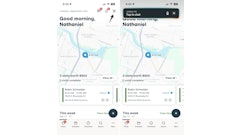
Lytx Inc. released its "2025 Road Safety Report” (previously “State of the Data”), analyzing over 300 billion miles of driving data to reveal critical insights into road safety trends and emerging risks for commercial fleets. Highlighted in this year’s report is that after a steady decline between 2018 and 2020, coming out of the COVID lockdown, collision rates and risky driving behaviors have been rising back up since 2023.
This year’s report highlights the latest collision trends, risky driving behaviors, riskiest locations and times to drive, the positive impact of safe driving, and the growing need for fleets to address these rising risks through advanced technology and coaching. As roadway dangers evolve, Lytx continues to lead by providing actionable data that helps fleets proactively mitigate risks and enhance driver safety.
Riskiest Days and Times to Drive + Holiday Insights
- Tuesdays are the riskiest days to drive in the U.S. in 2024. Sundays are the safest.
- Mid-week driving carries the most driving risk, while weekend driving is the safest.
- Risks were elevated between 11 a.m. and 3 p.m., peaking at 2 p.m.
- New Year’s Eve proved to be 2024’s riskiest day (and holiday) to drive in the U.S.
- Christmas Day (2023’s riskiest day and holiday to drive) was a close second.
- Overall, there was a 12% increase in collisions on major U.S. holidays when compared to the same day of the week across the rest of the year.
“The Lytx 2025 Road Safety Report is a powerful reminder that as our roads continue to see increased volumes of traffic, the nature of risk is evolving,” said Peter Goldwasser, Executive Director at Together for Safer Roads.
Golwasser continued, “What this data makes clear is that better understanding and proactive management of these new patterns of risk is critical. At Together for Safer Roads, we believe insights like these are key to shaping smarter, more responsive safety strategies for fleets, cities, and policymakers alike.”
Key Highlights:
Collision Rates and Severity: Despite a 24 percent increase in industry-wide collision rates per vehicle from Q3 2023 through Q4 2024, Lytx’s data shows a significant reduction in the more severe collision levels in comparison to 2023.
Level 1 (highest severity) collisions saw a decrease of 6 percent, while Level 2 (moderate severity) collisions dropped by 59 percent, demonstrating improved driver safety through proactive coaching and technology.
Also contributing to the drop in severity is a 4 percent reduction in overall risky behavior in 2024 among drivers equipped with Lytx technology.
Near Collisions: “Close calls” and near collisions also increased, up 52 percent when comparing Q4 2024 to Q4 2023, as roads have become increasingly congested.
Risky Driving Behaviors: Following too close, use of handheld device, not wearing a seat belt, and speeding continue to top the list of riskiest driving behaviors. Notable increases and decreases from 2023 to 2024 include: Speed violation (+9 percent); Food or drink (+7 percent); No seat belt (-13 percent); Handheld device (-9 percent)
Following Distance: Following distance (1-2 seconds) increased 2 percent from 2023 to 2024, while following distance (less than 1 second) rose by 19 percent, highlighting a need for companies to reinforce following distance policies through coaching and communication.
The Impact of Weather: Driving “too fast for conditions" made drivers 4x more likely to be in a Level 1 incident and was the top factor in severe inclement weather collisions. Fog is the most dangerous weather condition, increasing Level 1 collision likelihood by 2.8x. Due to its unfavorable weather conditions, winter carries double the risk for collisions compared to other seasons.
Top 10 Risky Driving Behaviors
Following distance (1-2 seconds from vehicle ahead)
Handheld device
No seat belt
Posted speed violation
Following distance (1 second or less from vehicle ahead)
Incomplete stop
Food or drink
Driver unbelted (roadway)
Failed to stop
Inattentive
“Today's fleets and drivers face rapidly changing risk environments,” said Rajesh Rudraradhya, Chief Technology Officer at Lytx. “To stay on top of these changes, managers need real-time data insights and advanced tools that can help them identify and address emerging risk patterns.”
Top 5 Riskiest States for Driving
2024 Ranking | Change from 2023 Ranking |
1. California | 0 |
2. Texas | +1 |
3. New York | -1 |
4. Florida | 0 |
5. New Jersey | +1 |
Top 5 Riskiest U.S. Cities/Districts for Driving
2024 Ranking | Change from 2023 Ranking |
1. New York, NY | 0 |
2. Los Angeles, CA | 0 |
3. Dallas/Fort Worth, TX | +3 |
4. Chicago, IL | -1 |
5. Washington, D.C. | +5 |
The insights for Lytx’s “2025 Road Safety Report” were collected from its industry-leading global driving database, which consists of over 300 billion miles of processed data from more than 5.5 million drivers traveling across 90+ countries. In 2024, Lytx labeled and analyzed over 209 million new driving events and captured over 106 million driving behaviors with its DriveCam event recorders.



















